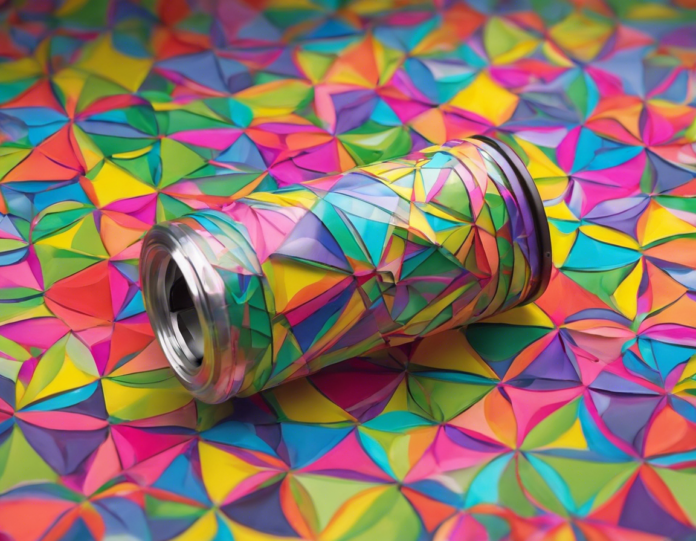Kaleidoscopes have fascinated people for centuries with their beautiful patterns and mesmerizing colors. These optical instruments rely on mirrors and small colorful objects to create a symmetrical display that changes as you rotate the tube. Making your own kaleidoscope can be a fun and rewarding craft project that you can enjoy for years to come. In this guide, we will take you through the step-by-step process of creating your very own kaleidoscope.
Materials Needed:
Before you begin creating your kaleidoscope, gather the following materials:
- Paper towel roll or small cardboard tube
- Three rectangular mirrors
- Decorative paper or stickers
- Beads, sequins, or other small, colorful objects
- Clear plastic sheet or glass
- Scissors
- Glue
- Tape
- Decorative ribbons or washi tape
- Marker
Step 1: Assembling the Mirrors
Begin by taking the three rectangular mirrors and arranging them into a triangle. Use tape to hold them together at the edges, forming a prism-like structure. Make sure the mirrors fit snugly together to avoid gaps where light could leak through.
Step 2: Creating the Tube
Take the paper towel roll or small cardboard tube and measure its length. Use the marker to mark the same length on the decorative paper or stickers. Cut the paper/stickers along the marked line and wrap it around the tube, securing it with glue. This will be the outer covering of your kaleidoscope.
Step 3: Inserting the Mirrors
Place the assembled mirrors inside one end of the tube. They should fit snugly inside, with the reflective sides facing inwards. Use glue to secure the mirrors in place if needed. Ensure that the mirrors are positioned at a 60-degree angle to one another to create the kaleidoscopic effect.
Step 4: Adding the Colorful Objects
Now, add the beads, sequins, or other small, colorful objects into the open end of the tube, on top of the mirrors. These objects will create the beautiful patterns inside your kaleidoscope. Be creative with your choice of objects and colors to achieve different visual effects.
Step 5: Sealing the End
Cut a piece of clear plastic sheet or glass to fit the open end of the tube. Secure it in place with glue, creating a viewing window for your kaleidoscope. Make sure the seal is tight to prevent the objects from falling out.
Step 6: Finishing Touches
To add a decorative touch to your kaleidoscope, use ribbons or washi tape to embellish the ends of the tube. You can also personalize it further by adding stickers or drawings to the outer covering. Let your creativity shine through in this step!
Step 7: Enjoying Your Kaleidoscope
Once the glue has dried, your kaleidoscope is ready to use. Hold it up to a source of light and rotate the tube to see the colorful patterns change and shift. Enjoy the mesmerizing beauty of your handmade kaleidoscope!
FAQs:
Q: Can I use other materials instead of mirrors?
A: While mirrors are commonly used in kaleidoscopes for their reflective properties, you can experiment with other materials such as shiny foil or reflective tape to achieve a similar effect.
Q: What should I do if the patterns in my kaleidoscope are blurry?
A: Blurry patterns may be caused by gaps between the mirrors or objects inside the tube. Ensure that everything is securely in place and the mirrors are clean for a clearer image.
Q: Can I make a larger kaleidoscope for better viewing?
A: Yes, you can scale up the size of your kaleidoscope by using larger mirrors and a longer tube. Just keep in mind that the larger the scope, the more colorful objects you will need to fill it.
Q: How can I create more complex patterns in my kaleidoscope?
A: Experiment with different shapes and colors of objects inside the tube to create more intricate patterns. You can also try using textured or translucent materials for unique visual effects.
Q: Is it possible to make a kaleidoscope without a tube?
A: While tubes are commonly used in traditional kaleidoscope designs, you can explore creating flat kaleidoscopes using materials like CDs, acrylic sheets, and mirrors arranged in a pattern.
Creating your own kaleidoscope is a fun and creative way to explore the beauty of symmetry and color. By following this step-by-step guide and experimenting with different materials and objects, you can craft a unique kaleidoscope that reflects your personal style and vision. Let your imagination run wild as you create dazzling patterns and immerse yourself in the magical world of kaleidoscopes!

